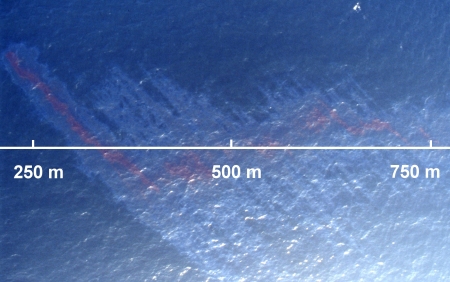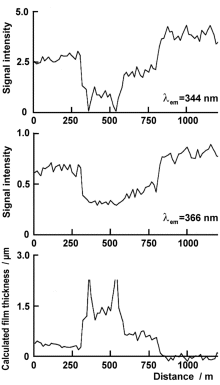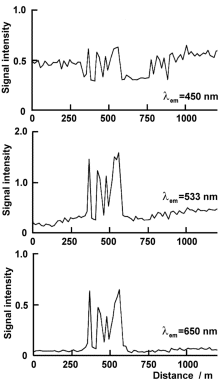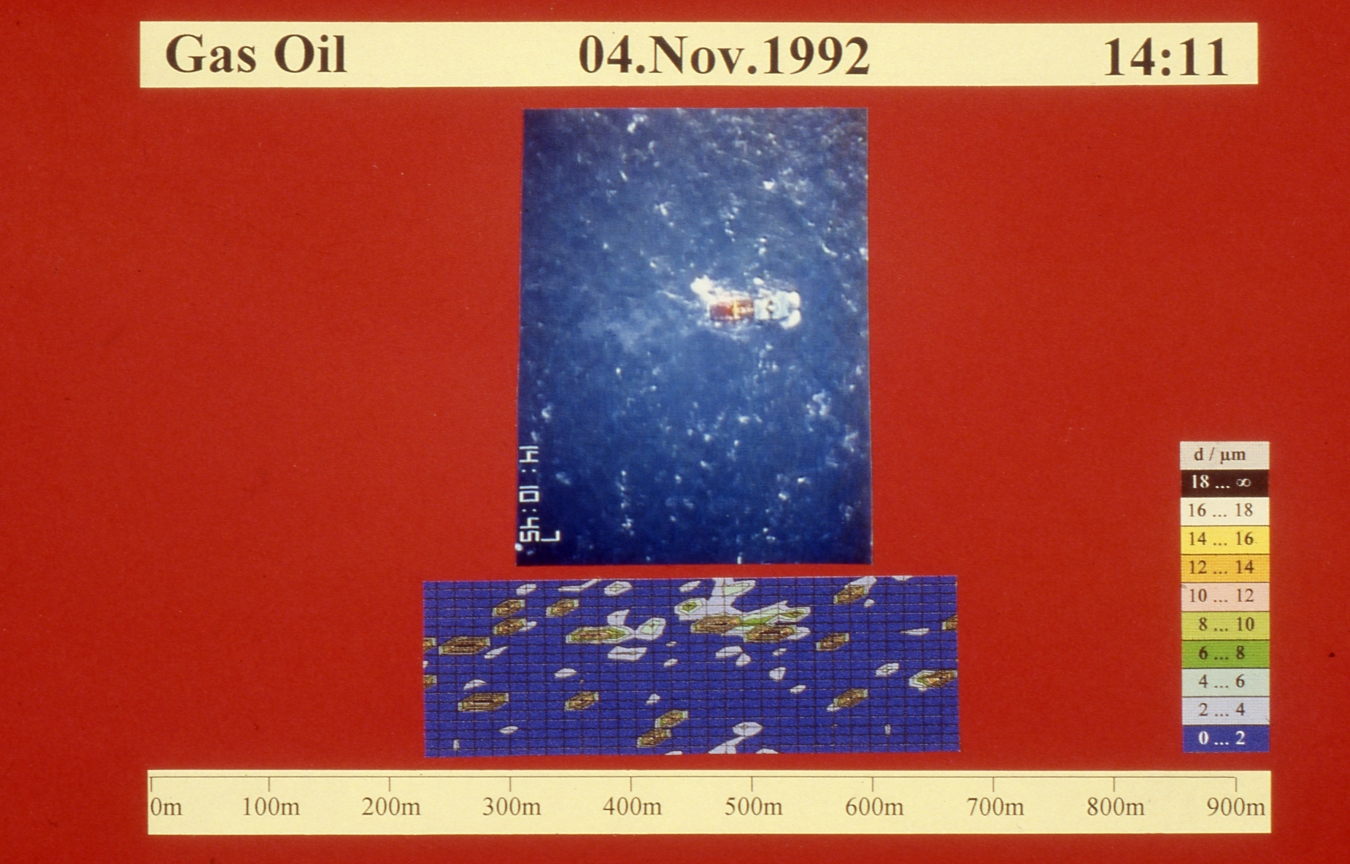Supplement 2.19: The Laser Fluorosensor (4/5)
Oil spills measured at sea
When operating a laser fluorosensor aboard an aircraft and flying over the sea one measures - as shown on the previous pages - fluorescence from naturally occuring substances and Raman scattering from the water. In the presence of an oil spill the intensity of water Raman scattering decreases, and the “natural” fluorescence signals are overlaid by oil fluorescence.

This behaviour can be seen in the data from an oil spill (photo above), shown in the right column. Excited with a laser having 308 nm emission wavelength, the graphs display the signals of water Raman scattering and the fluorescence of yellow substance and oil. The film thickness - calculated with the method given at the end of the previous page - is also shown. When water Raman scattering intensity becomes very low a film thickness can no more be evaluated (why?).
The series of images shown to the right includes photographs (above) from a discharge of 200 litres of gas oil and the results of a film thickness analysis with an imaging laser fluorosensor (below). The flight altitude was 300 m. The film thickness given in μm is colour coded. The gas oil is very light when compared with a crude oil, and evaporates rapidly. Hence, about 30 minutes following a discharge only traces of the oil spill can be made out in the photographs and in the data of the laser fluorosensor.
A laser fluorosensor allows
- to detect very thin oil films in the thickness range of about 0.1 to 10 μm
- to determine the film thickness, provided the oil absorbance is known
- to classify the oil type; the absorbance of the oil is estimated from the oil type for calculating the oil film thickness.
Therefore, the laser fluorosensor is primarily used for analysing deliberate discharges of oil into the sea. The thickness of large oil volumes, as they occur after accidental discharges, cannot be measured.
As with all optical instruments a laser fluorosensor can only be operated in good visibility conditions. As an active sensor it does not depend on daylight and can also be used at night.



